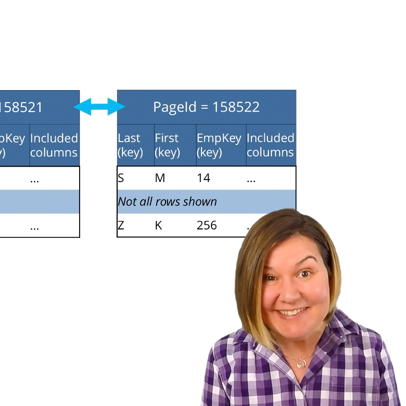Where are key columns stored in a nonclustered index in SQL Server?
Last week’s Quizletter featured a quiz on keys vs included columns in SQL Server. I got a great question from a reader:
What do you consider a good reference and/or description of indexes for SQL Server? For example where would you have documentation that explains how the answer to #1 is right?






![I Thought I Was An Introvert. Turns Out I Was Anxious as #@*] (Dear SQL DBA Episode 53)](/images/I-thought-I-was-an-introvert.jpg)